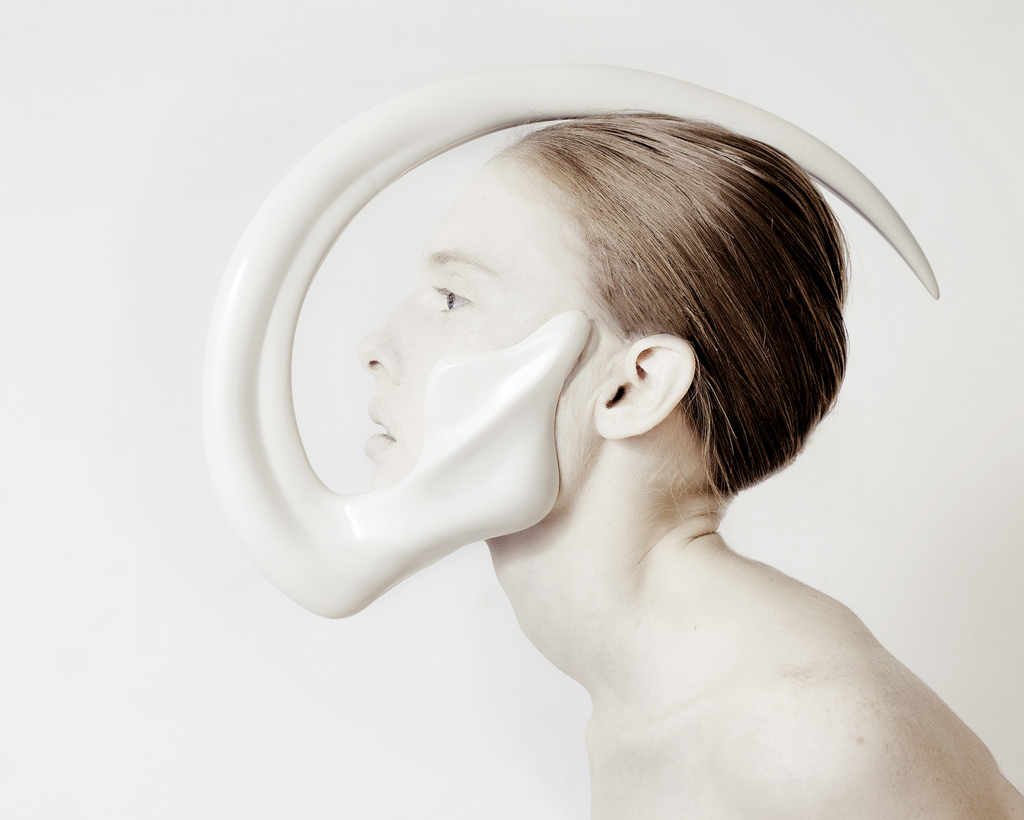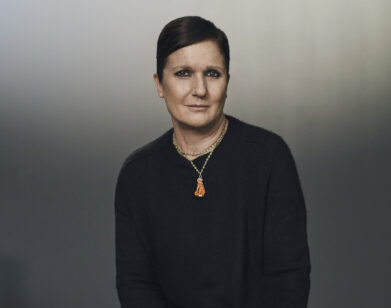ITS Fashion
A Japanese tailor on Savile Row frustrated by the exacting task of dressing the perfect gentleman, an Israeli designer inspired by the flight process, a Chinese knitter obsessed by Frida Kahlo’s painful beauty during her own illness, and a young Englishman whose collection is “an antidote to a sense of impending doom” were among the winners of this year’s ITS (International Talent Support), the fashion competition now in its 11th edition. Headquartered in Trieste, the cool blue city on Italy’s Adriatic coast near the Croatian border, ITS is an insider’s reunion for the style-obsessed, a chance to look at the latest blend of new techniques and free-form ideas.
Marina AbramoviÄ?, who was on this year’s jury, is a lot more interested in clothes than you might expect. “This is a place where young creators can meet,” she enthused. “We can see the future of fashion here. What surprises me is how connected all these people are to their countries, in spite of where they went to school.”
The dramatic inspirations were no surprise for Kei Kagami, a Japanese designer based in London and creative consultant to YKK, the Japanese company that produces zippers and other findings for fashion, which is a co-sponsor of ITS. Kagami has been working on the competition’s selection for the past seven years and says the team sifted through over 200 submissions to come up with the 11 finalists. “There’s nothing new today. The only way to do fashion is not to do it,” says Kagami.
For Mark Fast, the knitwear designer on the jury who shows his namesake collection in London, the experience was positively nostalgic. Fast launched his brand in 2009 and is already hailed as a wizard of knitwear. “This was such a good opportunity to get a different perspective from London Fashion Week,” he said. “It feels really good to get together with fellow artists who are able to showcase their most experimental work before they get a real job.”
“Well, that’s not exactly what I mean,” he continued. “You can still be creative in this business if you really try.”
For Shaun Samson, who won the big prize at ITS last year for his menswear collection, the past 12 months have gone by very quickly. “So many things have happened. I won the ITS prize before I had my first show in London, and it really helped me. I was able to get a place to work and the Mexican blankets I used for my first collection. Now I’m selling to 15 stores this fall. And these are stores I really love, like Opening Ceremony. This time last year I was still wondering how I had won this prize.”
Ichiro Suzuki, 32, from London’s Royal College of Art, won ITS’s 15,000€ Fashion Collection of the Year prize for his kaleidoscopic patchwork tailoring, inspired by the optic art of Bridget Riley, Escher, and Vasarely. “I had been working for Henry Poole on Savile Row for three and a half years. It’s repetitive work, day in and day out the same thing so I decided to take the chance and go back to school for my masters,” he says. The collection is based on his discovery of a small piece of patchwork executed by one of the tailors at Poole’s about 120 years ago. Suzuki covers sharp tailored suits with patchwork lion’s heads and builds up the back of jackets in 3-D gray-on-gray patching. “The problem is that a man’s suit is the most sensitive garment in the world,” he says. “It’s almost unchanged since 1890, so anything you do differently must be just right or it misses the mark.”
Lituanian Marcus Janusauskas, 33, who has just completed his Master’s from Antwerp’s Royal Academy, won ITS’s 25,000€ Diesel award, which includes a six-month internship with the jeans brand, for his “Sleeping Beauty” collection in pleats, burnt lace, and delicate plastic tubes that looks like blood is running through them, a eerily calm style inspired by fairytales, horror movies, Madame Grès, and the sculptures of Pablo Atchugarry.
England’s Luke Brooks, from Central Saint Martins, seemed to be Marina AbramoviÄ?’s favorite. “He’s angry about fashion, and that’s something we really need,” she said when presenting him with ITS’s 5000€ Special Fashion Prize. Brooks’ paint-splattered knits, the loose mesh scarves and jackets filled with colorful balls of leftover yarn, and his Olympic crown—which looks like the rings are suffering some sort of post-apocolyptic meltdown—was produced “instinctively as a kind of ‘fuck you’ to anxiety, he says.”
China’s Shengwei Wang, 29, was also looking for the light at the end of the tunnel. Wang took the 3,000€ Modateca award for her “Legless Bird” collection of flowing dresses in patchwork knits covered with embroidery and beading with interwoven metallic ribbon in tribute by Frida Kahlo. Wang discovered the Mexican artist when she had to leave her studies at Central Saint Martins to spend a year in the hospital back in China. “More than Frida’s work, I’m inspired by how she dressed and her beauty even when she was in pain,” she says.
After all this, Mark Goldenberg’s “Woven Bird” dresses, which won ITS awards from Italian Vogue and packaging design consultancy Avery Dennison, appeared jubilant. Goldenberg, 26, who studied at Israel’s Shenkar College, says he’s always had an affinity with flight and spent his childhood helping sick birds. For this collection, he studied the process of flight and the wire sculptures of artist Naum Gabo, which he combined with the techniques he learned working with a corset-maker. The result are hourglass shapes made from an interlocking system of feathery bands, which give his clothes a bird-in-cocktail look.
The 8,000€ ITS Accessories Collection of the Year award went to Serbian Ana Racevic’s “sculptural headgear,” inspired by animal anatomy, and the YKK’s 10,000€ award to Benjamin John Hall. who based his shoes on a fashion films trilogy of birth, life, and death. The most remarkable, though, was Vogue Talents award winner Victoria Spruce, whose shoes mix sculptural plastic and traditional leather shoemaking in shapes that appear to be twisting and melting onto themselves. For jewelry, China’s Xiao Zi Yang’s interchangeable collection based on an Asian joinery technique used for wooden architecture was awarded Swarovski’s 10,000€ prize, which includes a six-month internship.







